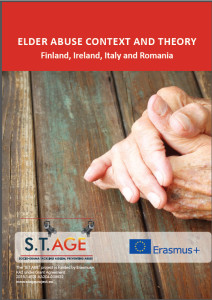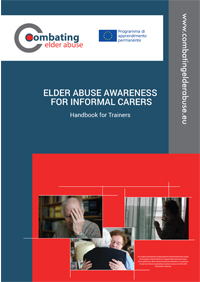An overview on the phenomenon
According to Eurostat Statistics population projections (2011) in the countries of this proposed project show that the percentage of people aged 65 years and over will increase to 20.2% in Ireland, 25.4% in Romania, 25.5% in Finland and 29.8% in Italy by 2040. In Italy almost half of those persons will be over 80 years. In Ireland the current percentage of the population aged 65 years and over is 11.7% (Census data 2011). However, like other European countries the Irish population is ageing, albeit at a somewhat slower rate. It is predicted that the number of people aged 65 years and over in Ireland will increase to 1.1 million by 2036 and between 1.3 and 1.4 million by 2041 (CSO, 2007). In Romania the percentage of the population aged 65 years and over in 2012 was 15% from the total Romanian population and of these 5.1% are over 85 years (The National Institute of Statistics, 2012). According to Eurostat Statistic projections (2011) the percentage of populations aged 65 years and over in the European Union will be 30% by 2060 and correspondingly 34% in Romania.
Although the health conditions of the older population may be expected to continue to improve the rapid increase of the oldest-old is likely to present a challenge to protective social systems. Especially older people with mental and physical disabilities who may be dependent on the help of informal or professional carers and as a result may be more vulnerable to abuse.
Previous research (European Report of the AVOW Project, 2011), carried out by the National Institute for Health and Welfare (THL), Finland, indicates that the prevalence rate of elder abuse in different European countries varies from 0.8% to 39.4%. In the last few years, the issue of abuse and neglect against older people has gained importance at European and national levels. Public authorities, policy makers, care providers and end users organisations are now aware that, just like child abuse, elder abuse can no longer be tolerated and measures must be put in place to ensure that all older persons who become dependent on others for care and assistance are adequately protected and can enjoy a dignified older age.
The situation in the countries involved in the partnership
• In Finland a prevalence study on violence and abuse towards older women living in private households showed that 25.1% of women aged between 60 and 97 years experienced some form of abuse. Emotional abuse was the most common form of violence experienced followed by financial abuse (AVOW Project, 2011).
• In Ireland the national prevalence study (Naughton et al, 2010) showed that approximately 18,000 (4%) older people living in the community had experienced abuse since turning 65 years. The main type of abuse experienced was financial abuse. Abuse was more commonly experienced by women and the prevalence of abuse increased with age.
• In Italy there are no national prevalence studies on elder abuse. The data can be collected from different sources such as local studies done in the framework of local initiatives, figures on gender-based violence (dealing only with women up to 70 years) and crime statistics dealing with crimes against older persons in residential care. In fact the crime statistics are very partial as only a minority of these facilities are checked by the police.
• Romania does not have prevalence data on elder abuse. The problem of elder abuse is still a taboo in Romania, ignored by authorities and not targeted within a national strategy. A study (Caciula I et al. 2010) on how home care workers and older people receiving home care services recognize elder abuse asked care workers and clients of a non-government home care organization serving four areas in Romania to complete the Caregiver Scenario Questionnaire to measure ability to identify abuse. No staff and only one older person correctly identified all four abusive strategies in a vignette. Staff with more professional caregiving experience recognized fewer abusive strategies. The study showed the rates of identification were worryingly low among professionals. It was suggested that mandatory abuse training and strategies to support people reporting suspected abuse, could help improve the management of elder abuse.




